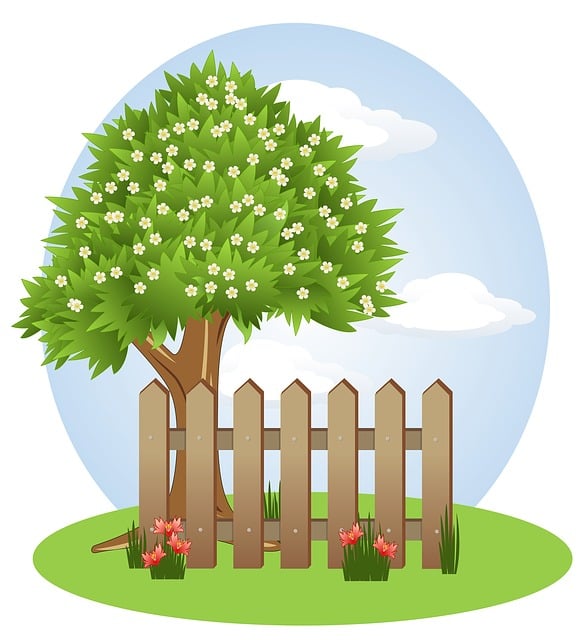Introduction
Coastal areas present unique challenges when it comes to fencing, with relentless wind, salt mist, and regular exposure to moisture. However, durable wooden fencing offers a robust, aesthetically pleasing solution. This article delves into the intricacies of selecting and maintaining wood fences designed for these harsh environments. We explore the advantages of durable wood species, provide installation and maintenance tips, and highlight the environmental benefits and longevity of coastal fencing, ensuring your investment stands strong against nature’s forces.
- Understanding Coastal Fencing Challenges
- Advantages of Durable Wooden Fencing
- Choosing the Right Wood Species for Coastlines
- Installation and Maintenance Tips
- Environmental Benefits and Longevity
Understanding Coastal Fencing Challenges
Coastal areas present unique challenges when it comes to fencing due to harsh weather conditions, saltwater corrosion, and frequent exposure to wind and waves. Traditional fencing materials often struggle to withstand these elements, leading to frequent maintenance or replacement. Durable wooden fencing offers a sustainable solution with proper treatment and installation.
The key to successful coastal fencing lies in selecting rot-resistant wood species like cedar or treated pine, combined with galvanised hardware and protective coatings. These measures ensure the fence not only survives but also retains its aesthetic appeal for years. Additionally, designing fences with specific considerations for wave impact, wind load, and saltwater exposure is essential to prevent damage and maintain structural integrity.
Advantages of Durable Wooden Fencing
Durable wooden fencing offers an attractive and functional solution for coastal areas, providing a range of advantages. Firstly, wood is a naturally sustainable material that can be sourced locally, reducing transportation emissions and promoting environmental friendliness. This eco-conscious approach aligns with the growing demand for greener alternatives in today’s market.
Additionally, durable wooden fences are highly weather-resistant, making them an ideal choice for coastal environments subject to harsh conditions. The right treatment and finishes can ensure these fences withstand salty sea air, strong winds, and even occasional exposure to direct sunlight, prolonging their lifespan without compromising aesthetics. This longevity not only saves costs in the long run but also minimizes maintenance requirements, ensuring a low-fuss solution for homeowners and businesses alike.
Choosing the Right Wood Species for Coastlines
When selecting wood for coastal fencing, understanding the local climate is key. Saltwater and high humidity can accelerate wood decay, so choosing a durable species is essential. Redwood and cedar are popular choices due to their natural resistance to rot and insects. These woods have high oil content, making them less susceptible to moisture absorption.
Additionally, looking for treated or preservative-impregnated options can further enhance durability. Some manufacturers infuse the wood with chemicals that deter pests and resist corrosion from saltwater. While these may be more expensive, they offer longer-lasting protection against the harsh coastal environment.
Installation and Maintenance Tips
When installing durable wooden fencing in coastal areas, it’s crucial to ensure proper drainage to prevent water damage. Digging shallow trenches or creating a slight slope can help direct water away from posts and panels. Additionally, using pressure-treated wood specifically designed for outdoor environments is essential to withstand salty air and moisture. Regular cleaning with mild soap and water every few months will keep the fence looking fresh.
For maintenance, check for loose or damaged boards immediately after installation and throughout the year. Replacing worn-out sections promptly prevents rot and pest infestation. Applying a fresh coat of waterproof sealant every couple of years can significantly extend the life of your wooden fencing, preserving its aesthetic appeal and structural integrity in challenging coastal conditions.
Environmental Benefits and Longevity
Durable wooden fencing offers more than just aesthetic appeal for coastal areas; it also provides significant environmental benefits and longevity. The use of wood as a primary material is an eco-friendly choice because it is renewable, unlike many synthetic alternatives. Properly maintained wooden fences can last for decades, reducing the need for frequent replacements, which minimizes waste generation and conserves natural resources.
Moreover, these fences seamlessly integrate with the natural landscape, enhancing coastal ecosystems rather than disrupting them. The organic texture and warm tones of wood complement the surrounding environment, fostering a harmonious blend that is both aesthetically pleasing and ecologically sound. This longevity and environmental friendliness make durable wooden fencing an excellent choice for coastal communities seeking to protect their properties while preserving the beauty and biodiversity of their unique habitats.
